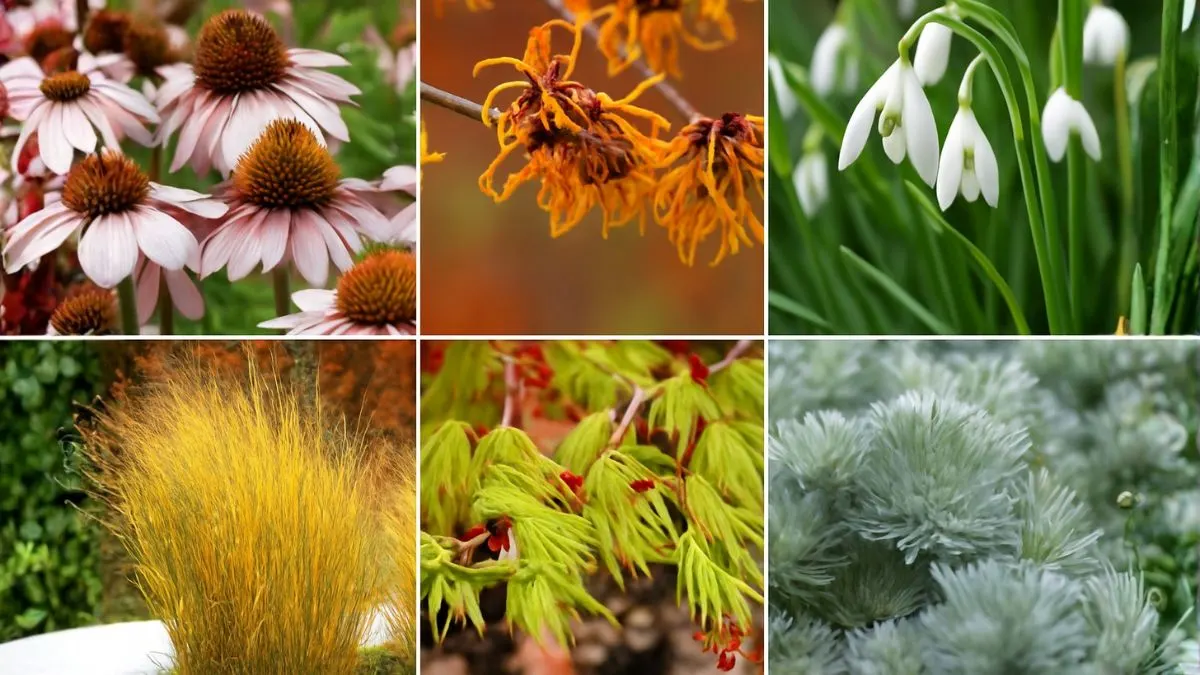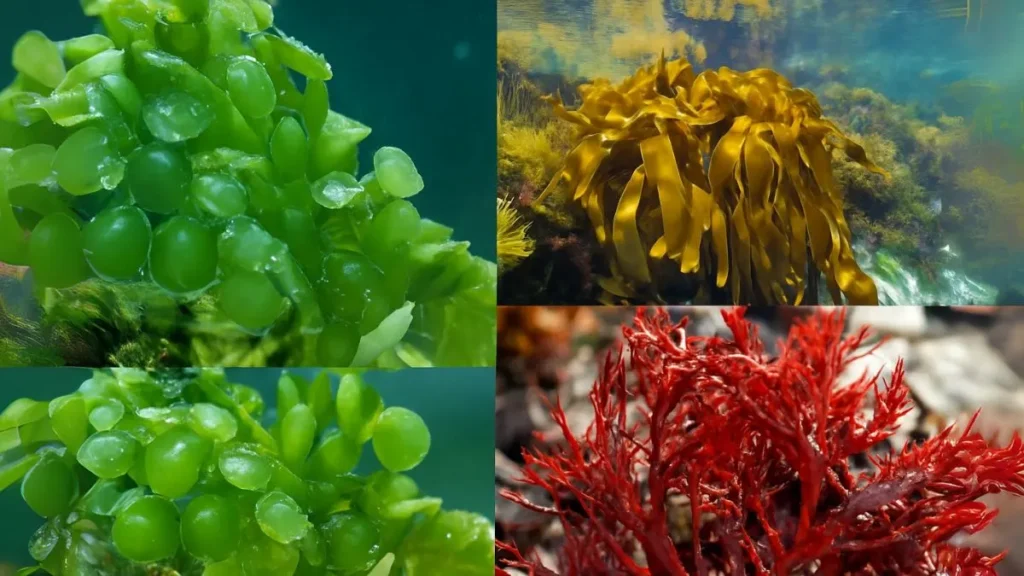Winter has a reputation for turning gardens into drab, lifeless patches of brown and gray, but there’s no need to let it be that way. Though the ground becomes frosty and most crops are dormant, some plants flaunt green, feisty personalities. This greenery makes your outdoor or indoor spaces a year-round draw with texture, contrast and color.
1. Coneflower (Echinacea) – The Winter Soldier

Read the label: full sun to partial shade; probably it wants more of one, or the other.
Light: full sun
Size: 2–3 feet tall and 1.5–2 feet wide
Water needs: Low
Cold-hardy: Zone 4 or 5
Climate range: Wide but less hot is better
The secret here isn’t that this irresistible perennial flowers later in summer and fall than most coneflowers.
Coneflower (Echinacea) — Put the coneflower on your list of toughest perennials you can grow. It is best known for its summer flowers, which bloom in colors that range from pink to green-purple, but the bloom of Mont rose is finished by winter — the sturdy seed heads soldier on providing structure and interest even at this time of year when snow covers most gardens.
Why You’ll Love It:
- Winter Beauty: Dead flower heads hold frost and snow, adding an interesting shape.
- Appeal to Wildlife: Birds, particularly finches, enjoy the seeds in winter.
- Easy Planting: Best planted in full sun and well-drained soil.
Gardening Tip: Don’t be tempted to cut your Echinacea back in fall — let the seed heads stand for structure and food for locals.
Also Read: Why Every Urban Gardener Is Switching to Aeroponic Tower Garden
2. Witch Hazel – The Winter Tonifier!
If ever a plant were to flip winter off, it’s witch hazel. Its bright yellow, orange or occasionally red flowers with “legs” that look like a spider add color (and scent) to your garden.
Why Witch Hazel Stands Out:
- Cold-weather Flowers: This is one of the few that flowers during late winter, while most plants are dormant.
- Fragrance Factor: Flowers are sweet-spicy-scented and very fragrant on the breeze.
- Traditional Cure: Witch hazel has long been used to soothe skin irritation.
Personal Tip: I had witch hazel growing alongside my front walk. Its early flowers and delicate scent welcome you home even on chilly mornings.
3. Jasminum nudiflorum and Galanthus – Winter Gems!
Winter jasmine (Jasminum nudiflorum) and snowdrops (Galanthus nivalis) are ideal late-winter garden companions.
Why They’re Perfect for Cold Climates:
- Winter Jasmine: Produces vibrant yellow flowers between January and March. It performs nicely on walls and trellises, and tolerates shade as well.
- Snowdrops: These fragile white flowers pierce through frost and can bloom as early as February, symbolizing hope and plenitude.
Fun Fact: Snowdrops are sometimes called the “first smile of spring” in Canada and other parts of the northern US.
4. Switch Grass – An Awesome Ornamental Grass
Switch Grass — Want to add movement and texture to your garden? It’s a tough perennial grass that looks gorgeous all winter with its feathery plumes fluttering in the breeze.
Highlights:
- Cold-Hardy: Native to North America, it tolerates frost and snow.
- Wildlife Friendly: Offers shelter for birds and beneficial insects.
- Low Maintenance: Once established, it’s drought-tolerant and very low maintenance.
Pro Tip: Switch Grass pairs beautifully with Coneflower for a season-long, authentic prairie garden when everything else goes dormant.
Also Read: Crocosmia: The Drought-Resistant Flower That Makes Every Garden Pop
5. Coral Bark Japanese Maple – A Living Sculpture
While other trees are turning ho-hum shades of red and gold, this Japanese maple (Acer palmatum ‘Sango-kaku’) burns bright. Its fiery coral-red stems are stunning against the snow, making it a top pick for winter interest and one of the most photogenic plants in cold landscapes.
Why It’s a Winter Favorite:
- Coral Red Color: The red bark is most beautiful during winter.
- Appeal All-Year: Gorgeous green foliage in summer, golden in fall, revealing red branches in winter.
- Fits Anywhere: Great for decks, balconies, small gardens, or even an extra-large bonsai.
Gardening Tip: Grow the Coral Bark Maple where it gets morning sun and afternoon shade to keep its color vivid.
6. ARTEMISIA (Artemisia spp.) – The Silvery Showstopper
Artemisia (Artemisia spp.) — Esteemed for its soft gray fern-like foliage, this plant casts a magical silver glow across winter gardens. It’s drought-tolerant, cold-hardy, and adaptable, thriving in borders or rock gardens.
Why You’ll Love Artemisia:
- Interesting Texture: The fernlike foliage provides contrast to evergreen plants.
- Leaves: Emit a sweet earthy aroma.
- Hardy Performer: Tolerates frost and thrives in poor soils where others fail.
Popular Varieties:
- Artemisia ‘Powis Castle’ – Dense, gray-green, and neat.
- Artemisia absinthium (Wormwood): Valued historically for its herbal remedy uses.
Personal Note: The silvered leaves of Artemisia look magical in moonlight and, even frosted with ice, shine like a winter jewel!
Bonus Picks – A Couple More Cold-Hardy Beauties
As my bromeliads bloom, we re-pot in orchid bark (best) — and that gorgeous plant can live indefinitely with enough light, water, and heat.
Other honorable mentions for winter interest include:
- Hellebores (“Christmas Rose”): Snow blooms that push through frost — pink and white petals.
- Boxwood: Adds formality and symmetry to formal winter gardens.
- Containers (paired or mixed) make it easy to add luxuriant winter greenery to gloomy corners.
Also Read: Ranunculus Bulbs: The Secret to Blooming 100 Petals in One Flower
Quick Comparison Table
Plant Name |
Type |
Winter Interest |
Sunlight Needs |
Key Feature |
Coneflower (Echinacea) |
Perennial |
Frosted seed heads |
Full sun |
Drought-resistant, attracts birds |
Witch Hazel |
Shrub |
Blooms in late winter |
Partial sun |
Bright yellow-orange flowers |
Winter Jasmine & Snowdrops |
Vine & Bulb |
Early blooms |
Partial shade |
Hardy and early-blooming |
Switch Grass |
Ornamental grass |
Feathery plumes |
Full sun |
Great texture, low care |
Coral Bark Japanese Maple |
Tree |
Red bark in winter |
Partial sun |
Striking winter color |
Artemisia (Artemisia spp.) |
Perennial herb |
Silver foliage |
Full sun |
Aromatic, frost-resistant |
Personal Experience
See what my little backyard looked like in December and January when there wasn’t much life — until I planted a Coral Bark Japanese Maple. Within weeks, the garden became a winter Eden of hush and peace. The soft sway of grass, the silver shimmer of Artemisia, and the coral glow of maple would warm even a chilly morning.
It’s amusing, really — how the right foliage can bring structure, scent, and serenity to an otherwise desolate winter landscape.
Conclusion
It’s winter, but the doors on gardening are never closed. From the silvery texture of Artemisia, to the coral bark of the Japanese Maple, to the delicate blooms of Witch Hazel, Winter Jasmine, and Snowdrops — there’s no shortage of cold-hardy foliage plants.
So don’t allow your garden to hibernate this season. Take it indoors or outdoors using the best foliage plants to buy in winter — and enjoy color, fragrance, and charm even as snow is falling.






